How to make your generator quiet as a cricket? Generators are very important appliances that offer backup power in case of emergencies, outages, or in remote locations where electricity may not be readily available. One common drawback with using generators is the noise produced by them, simple and very efficient approaches that you can use to fix this problem will be explained in this article as we explore “How to make your generator quiet as a cricket”.
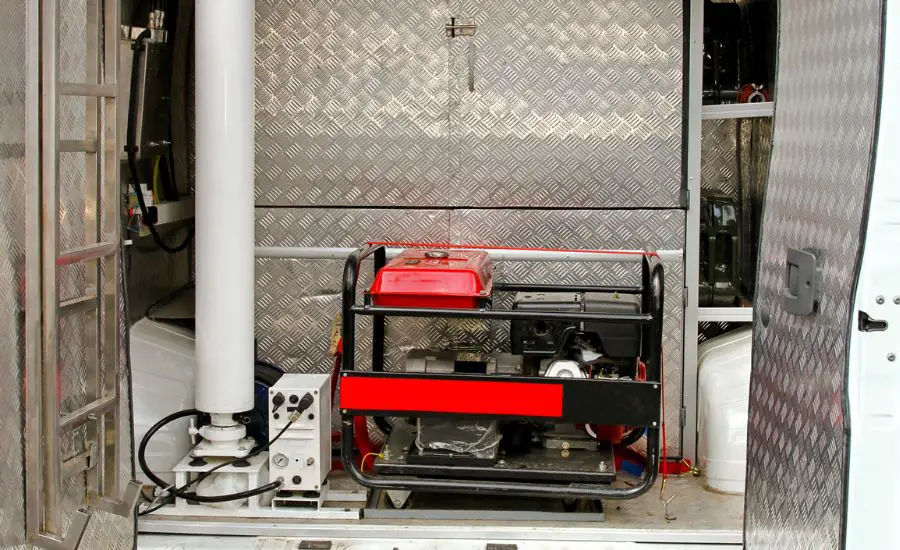
Why is your generator noisy?
The internal combustion engine of a generator generates mechanical energy, which is then transformed into electrical power, by burning fuel, usually natural gas, diesel, or gasoline. There is a lot of noise produced by the combustion process and the movement of engine parts, which cause vibrations and sound waves.
Generator exhaust systems are used to release combustion gasses, and these systems can be noisy.
Cooling systems are also necessary for generators to avoid overheating, fans or air cooling systems that keep the air cooled generate additional noise as they operate to maintain a safe temperature.
Even portable generators consist of various moving parts, such as alternators and fans, which generate mechanical vibrations that contribute to the overall noise level and make the generators loud.
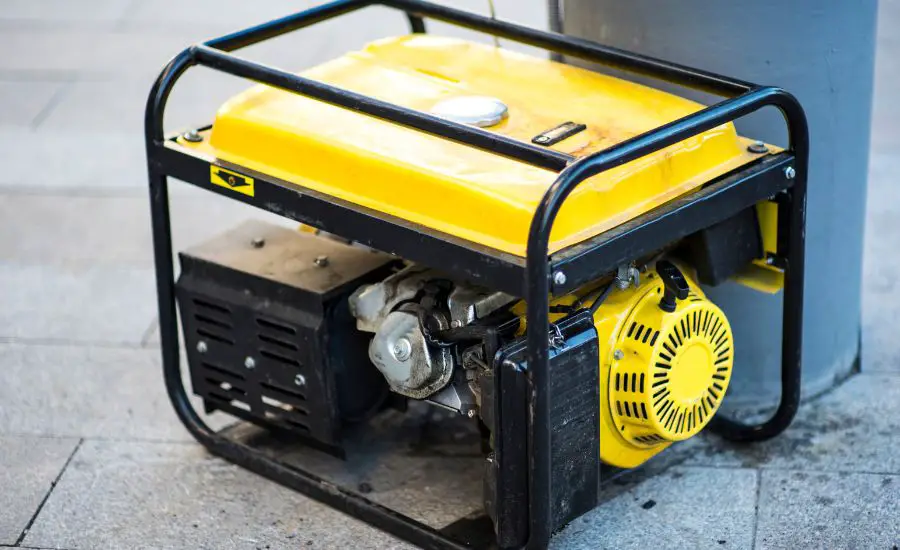
Ways to make your generator quiet
There are several techniques and approaches you can try to keep your generator quiet, these approaches are explained below.
Lubricating necessary parts
An engine’s heat can be dissipated more effectively with proper lubrication, this can stop engine parts from expanding and contracting excessively, which will lessen the grating noise that temperature variations produce.
An engine that is properly lubricated operates more effectively, requiring less work to move its parts. This reduces the noise level of the generator and improves the generator’s overall performance.
Lubrication is crucial for preventing premature wear and damage to engine parts. A generator that is regularly lubricated is more likely to have a longer and more reliable lifespan, saving you money on repairs and replacements.
Consult your generator’s owner’s manual to identify the specific parts that require lubrication, different generator models may have different lubrication needs.
It’s essential to use the manufacturer-recommended lubricants and adhere to the suggested schedule for oil changes and maintenance to get rid of the annoying noise and make the generator quieter.
Make sure you regularly keep the oil levels in the generator within the suggested range as low oil levels can result in engine damage and greater friction.
Regularly check for damage and replace any worn seals to stop oil leaks because oil leaks and inadequate lubrication can result from leaking gaskets and seals.
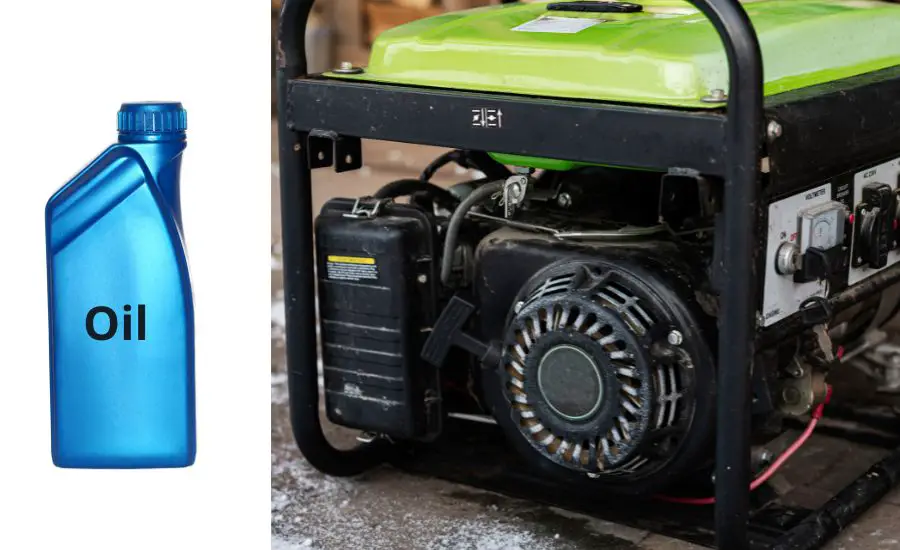
Build a sound enclosure
A sound enclosure is another effective way to make a generator quiet, this involves providing a physical barrier that isolates the generator from its surroundings.
This isolation effectively contains the noise generated by the generator, therefore making the generator quiet.
Enclosures can be designed with materials and shapes that minimize sound reflection, this means that even the noise generated within the enclosure is absorbed or dampened, reducing the generator’s noise level.
Sound enclosures also offer a level of protection for the generator against external factors such as weather and potential tampering, this improves the generator’s safety and longevity.
There are laws and rules governing noise levels in many residential regions, building a sound enclosure ensures compliance with these regulations, avoiding noise-related complaints from nearby residents or municipal authorities.
Sound enclosures can be designed to blend in with the surroundings, this not only helps ensure a silent generator but also gives your generator a more pleasing appearance.
The enclosure can be custom-built to suit your generator’s size and shape. Common construction materials include wood, metal, or concrete, the design should incorporate sound-absorbing materials on the interior to minimize sound reflection.
To keep the generator from overheating, make sure the enclosure has enough ventilation, the enclosure should provide easy access to the generator for maintenance and repairs.
To further reduce noise, install materials that absorb sound like acoustic foam, panels, or barriers inside the enclosure.
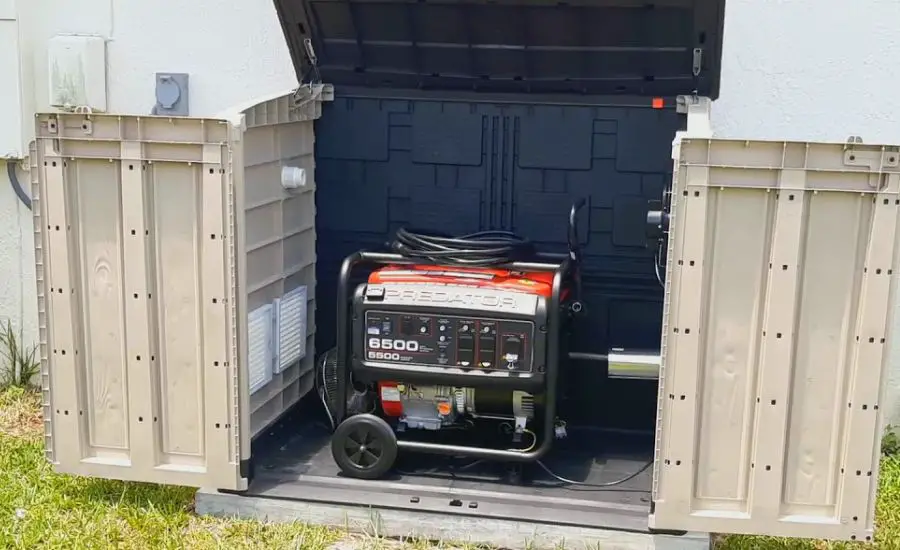
Using sound deflectors
The purpose of sound deflectors is to redirect and absorb sound waves that are produced by the generator. They function as a barrier, absorbing and preventing noise, which significantly reduces noise levels.
You can position deflectors strategically to divert noise from undesirable places, this implies that you can direct the noise to specific areas, lessening the effect it has on nearby residents.
For residential areas or locations where privacy is a concern, deflectors can provide a sense of seclusion by reducing the noise emitted by the generator making it a very efficient way to make a generator quiet.
Usually, sound deflectors are made to be compact and discrete, they don’t take up much room and are easily incorporated into the generator setup.
Compared to building sound enclosures or structures, deflectors are a more cost-effective option for reducing generator noise.
First, identify the primary noise sources in your generator setup, this includes the engine, exhaust system, and any additional components that may contribute to noise.
Select deflectors that work with the model and configuration of your particular generator.
While some deflectors are made for exhaust systems, others are made for engines.
Position the deflectors strategically to intercept and redirect sound waves away from sensitive areas. Ensure that they are effectively placed between the noise source and the desired area.
Dust and debris can reduce their effectiveness over time so ensure the the deflectors are regularly cleaned and well-maintained.
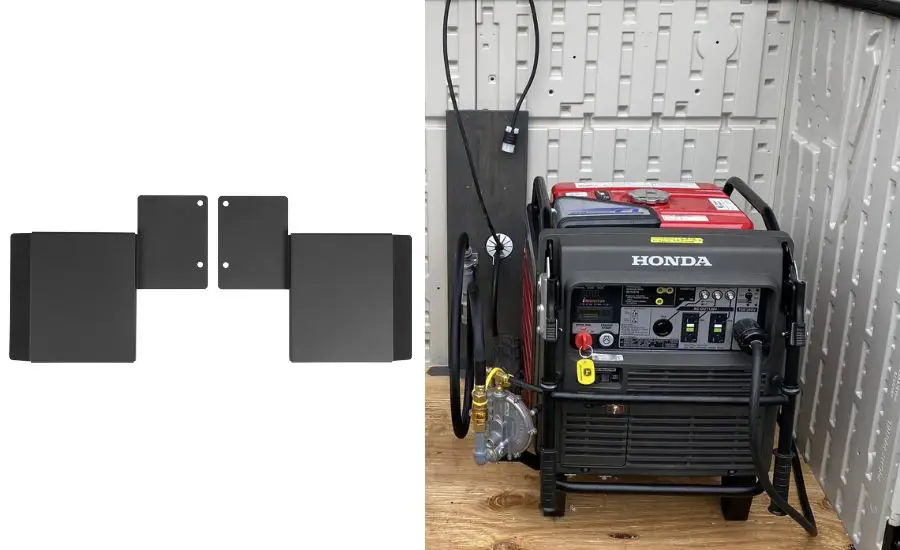
Move the generator far away
The noise your generator produces can be significantly reduced by moving it farther away from your house or workplace. As the sound has to travel a longer distance, it dissipates, resulting in a quieter environment.
Relocating your generator minimizes the noise impact on your daily life, ensuring a more peaceful and comfortable atmosphere, this is especially crucial for residential areas and other locations where silence is desired.
The risks of being near heat, mechanical parts, and exhaust fumes are decreased when a generator is placed distant from residential areas, this reduces any health risks and also enhances safety.
Relocating your generator to a remote location frees up space in your immediate vicinity, allowing for better utilization of your property or workspace.
Conduct a comprehensive assessment of your property to determine the most suitable location for your generator. Factors to consider include accessibility, ventilation, and compliance with local regulations.
Seek advice from an expert, such as a generator specialist or electrician, to assist you in deciding on the ideal position and take care of any installation or relocation needs.
Make sure you have sufficient wiring and a dependable fuel delivery system in place to reach your generator’s remote position.
Make sure there is enough airflow in the isolated site to avoid heat accumulation around the generator. Continue to perform regular maintenance on the generator, including oil changes, air filter replacements, and mechanical inspections, even in this remote location.

Replace the muffler
The muffler is a key component responsible for minimizing the sound generated by the exhaust system and your generator’s noise level can be considerably lowered by replacing your generator muffler.
You can make the atmosphere more comfortable and quiet by changing the muffler, particularly in residential settings or other places where keeping the environment quiet is important.
A quieter generator is safer to operate, as it reduces the risk of noise-related stress and hearing damage for individuals in the vicinity.
Reducing noise pollution is not only considerate of your surroundings but also environmentally responsible, quieter generators are less disruptive to local ecosystems and wildlife.
Be sure you choose the appropriate replacement part before replacing the muffler on your generator. To choose the right muffler for your model, refer to the owner’s manual or get advice from an expert.
While it’s possible to replace the muffler yourself if you’re familiar with the process, consulting a professional, such as an electrician or a generator specialist, can ensure a seamless and safe replacement.
Proper installation is crucial, to guarantee that the replacement muffler efficiently reduces exhaust noise, it must be placed firmly and placed in the proper direction.
After replacing the generator muffler, continue to perform regular maintenance on your generator, including oil changes, air filter replacements, and mechanical inspections, to maintain a quieter and more reliable generator.
After muffler replacement, conduct sound testing to ensure that the noise reduction meets your expectations and complies with local regulations.
Redirecting the exhaust pipe
Redirecting the exhaust pipes can effectively channel the exhaust gases away from the generator and living spaces, therefore making the generator quieter and reducing the loud noise that reaches your home or workspace.
In addition to enhancing safety and ensuring a healthier atmosphere, redirecting the exhaust pipes reduces the possibility of being exposed to heat, exhaust fumes, and possible fire threats.
If you want to reduce noise from your generator, redirecting the generator’s exhaust pipe is a more affordable noise reduction solution than building a generator quiet enclosure or purchasing a soundproof generator box.
In addition to redirecting the exhaust pipe of your loud generator, placing the generator on a soft surface, such as a sound-absorbing mat or anti-vibration pad, effectively absorbs mechanical vibrations, reducing the transmission of noise to the ground and nearby structures.
The generator’s moving components, like the engine and alternator, are less likely to cause mechanical noise because of the soft surface that absorbs their impact.
Placing the generator on a soft surface prevents noise from being transferred to the surroundings, this can significantly reduce the noise level.
A soft surface placement reduces vibration, which not only makes the generator run more quietly but also lengthens its lifespan by minimizing wear and tear on its mechanical parts.

FAQ
There are several methods to make your generator super silent, this includes also using rubber feet, anti-vibration mats, or a mass-loaded vinyl.
Yes, you can purchase a silencer for either a large or portable generator to suppress noise from the generator.
Cut the ideal dimensions of plywood to fit your generator and line the interior with mass-loaded vinyl, you can add a soundproof lid for your noisy generator.
You can reduce generator noise and make your generator quieter by installing good sound deflectors or using a baffle box.
Conclusion
In conclusion, to make your generator quieter you can consider redirecting the exhaust pipe, using a baffle box, or using any of the other approaches explained above. You can also consider getting a new portable generator such as an inverter generators or any other quiet generator of your choice to ensure an amazing and noise-free experience.


